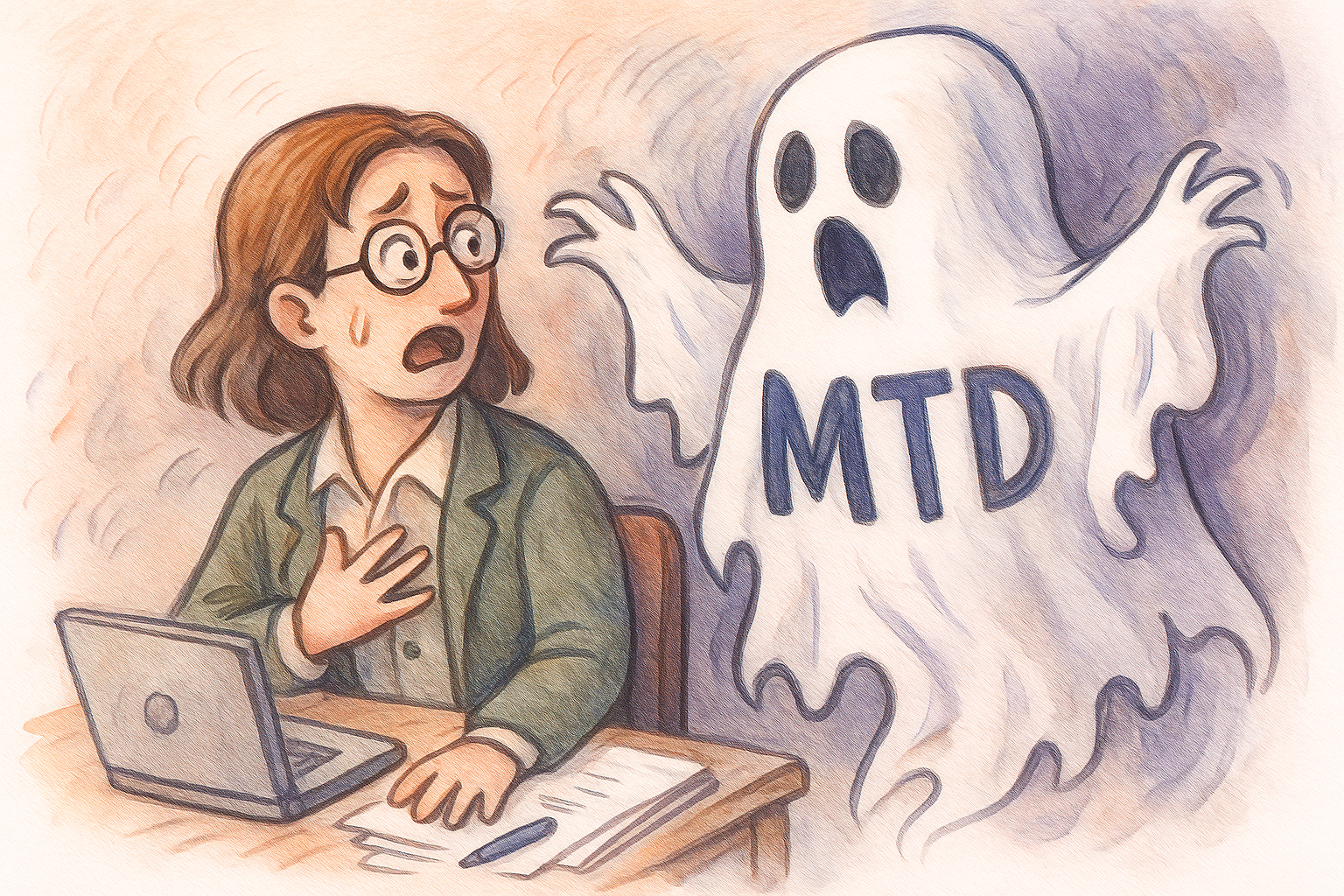Gov.uk Chatbot (hmmm?!)
aka “It’s Help Gov, but not as we know it!”
In a move that can only be described as “boldly going where no AI should ever venture,” the UK government has unveiled its latest marvel: the GOV.UK Experimental AI Chatbot, “yay!”
It’s designed to assist small businesses (and hopefully accountants too, although they don’t mention that) in navigating the labyrinthine of corridors of government bureaucracy. This experimental tool promises to transform confusion into … well, possibly more confusion, but now with a digital twist.
So, to save you the time and trouble of testing this out yourself at this festive time of year, not to mention your sanity, I’ve done it for you. And here’s the wonderful journey I went on.

Getting Started
When you first start, it’s made very clear, that AI has limitations (and that’s important). And then your also told about the most severe limitation of all to be aware of:
“The biggest limitation of AI tools like me is a problem known as ‘hallucination’. This means we sometimes make up false information or facts but present them to you confidently.”
That’s incredible, they’ve actually developed an AI that works exactly the same as our elected officials, amazeballs!
You’re then reminded to always check any answers given, using the links provided to official Gov.uk webpages – nothing like marking your own homework! In fairness, this is the single biggest challenge of AI, being able to ensure understanding and explainability.
When you ask the AI chatbot to tell you more, it explains that the AI combines the same technology used on ChatGPT with GOV.UK guidance. It then goes on to explain that ChatGPT is trained using millions of articles, books and other pieces of text. It means that sometimes it’ll use information from its training instead of GOV.UK, which could therefore be false or misleading. That’s a real confidence boost!
It is potentially slightly misleading that you’re not made aware of the these limitations earlier on. Your data may well end up on servers located somewhere in the universe and used for broader AI training. This is something that really should be made clearer, before using the service.
Only after you click “Understand” to accept and move on, does it tell you, “One more thing – please do not include any sensitive or personal information in your questions.”
A Helping Hand or a Digital Dead End?
Let’s say, for example, you want to clarify the latest tax regulations for a small business owner client. The GOV.UK AI Chatbot is armed with cutting-edge capability to provide “straightforward, personalised answers” by sifting through the 700,000 pages of GOV.UK. Because nothing says efficiency like entrusting your important enquiries to a machine learning model trained on the very documents making you want to cry in the first place.
Guardrails: Keeping the Chatbot on the Straight & Narrow
To prevent the AI chatbot from veering into uncharted territories, like offering illegal or incorrect advice or, heaven forbid, expressing a helpful opinion, the government experts have installed some helpful “guardrails”. Now this is very commonplace in this sphere, but I think just maybe, these measures might make the chatbot as neutral and unhelpful as an MP on breakfast time TV. After all, we wouldn’t want an AI revolution sparked by a rogue chatbot suggesting tax evasion or recommending the wrong paper form to print out and send.
User Experience: A Journey Through the Mundane
I believe that early trials revealed that nearly 70% of users found the chatbot’s responses “helpful”, which I think might be bureaucratic jargon for “marginally better than s***”. I probably wouldn’t be that generous, and I’m sure many accountants will feel the same. To enhance this lukewarm reception, developers also introduced an onboarding process and accessibility improvements. This ensures that users of all backgrounds can equally experience the chatbot’s mediocrity. How’s that for inclusion policy in action!
The Future: Expanding the Digital Quagmire
If this trial succeeds, the government envisions deploying the chatbot across the entire GOV.UK platform. Picture it: millions of users each week, all receiving the same generic, non-committal answers to their unique queries. It’s a bureaucrat’s dream come true. It’s a world where every question is met with a response that is both technically accurate and utterly useless.
Conclusion: A Brave New World of Bureaucratic Futility
In summary, the GOV.UK AI Chatbot represents a significant leap forward in the government’s ongoing ambition to digitise inefficiency. And I don’t want to be too critical, as I know myself how long an initiative like this takes to work properly. Yet, the governments track-record for making-things-digital, doesn’t fill me with confidence.
By combining the inscrutability of AI with the opacity of government regulations, I don’t think the GOV.UK AI Chatbot offers more than a decent search facility on the existing outdated and bulky government processes that waste so much of people’s time. But at least you reach the point of failure much quicker, and that’s got to be a bonus. Certainly a step up from the good old days of endless phone menus and interminable hold music. That’s IF it can ever be trained to deliver actual, useful, advice. We’ll see.
So here’s to the GOV.UK AI Chatbot! May it continue to provide answers to questions no one asked, and solutions to problems that don’t exist. After all, isn’t that what government innovation is all about?





Leave A Comment